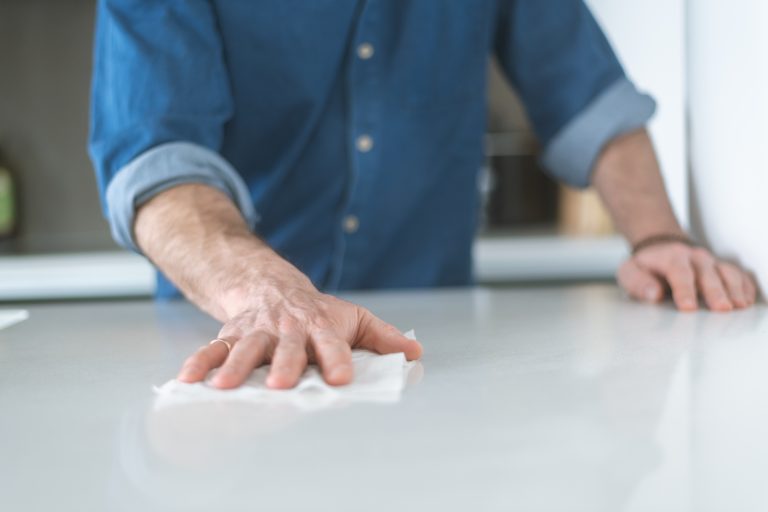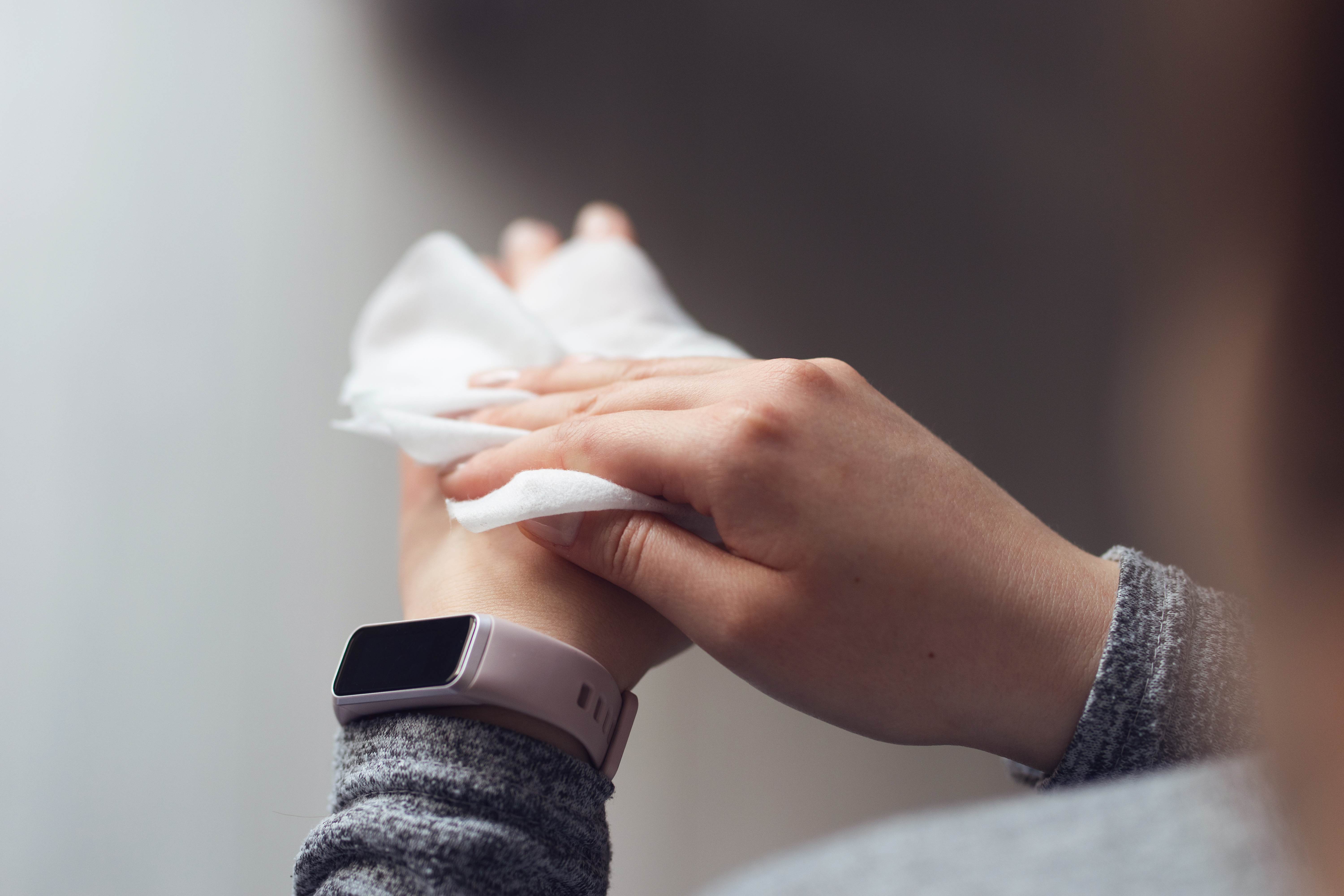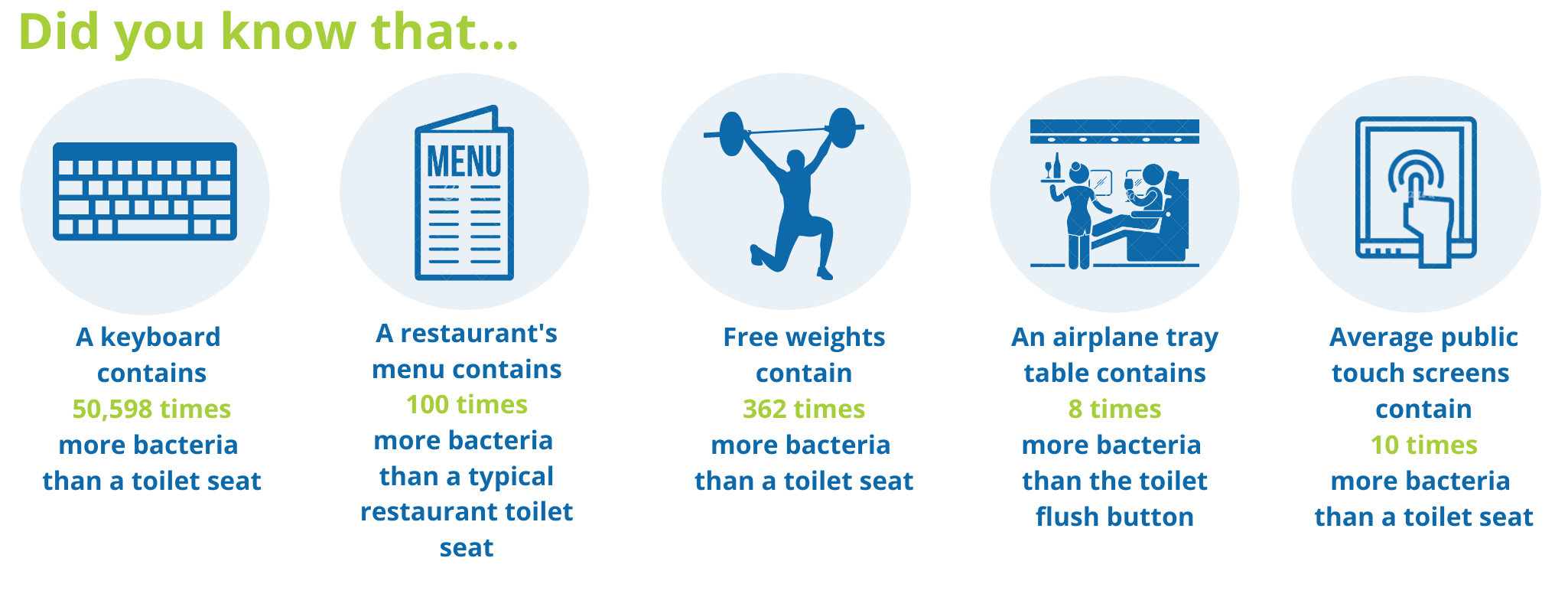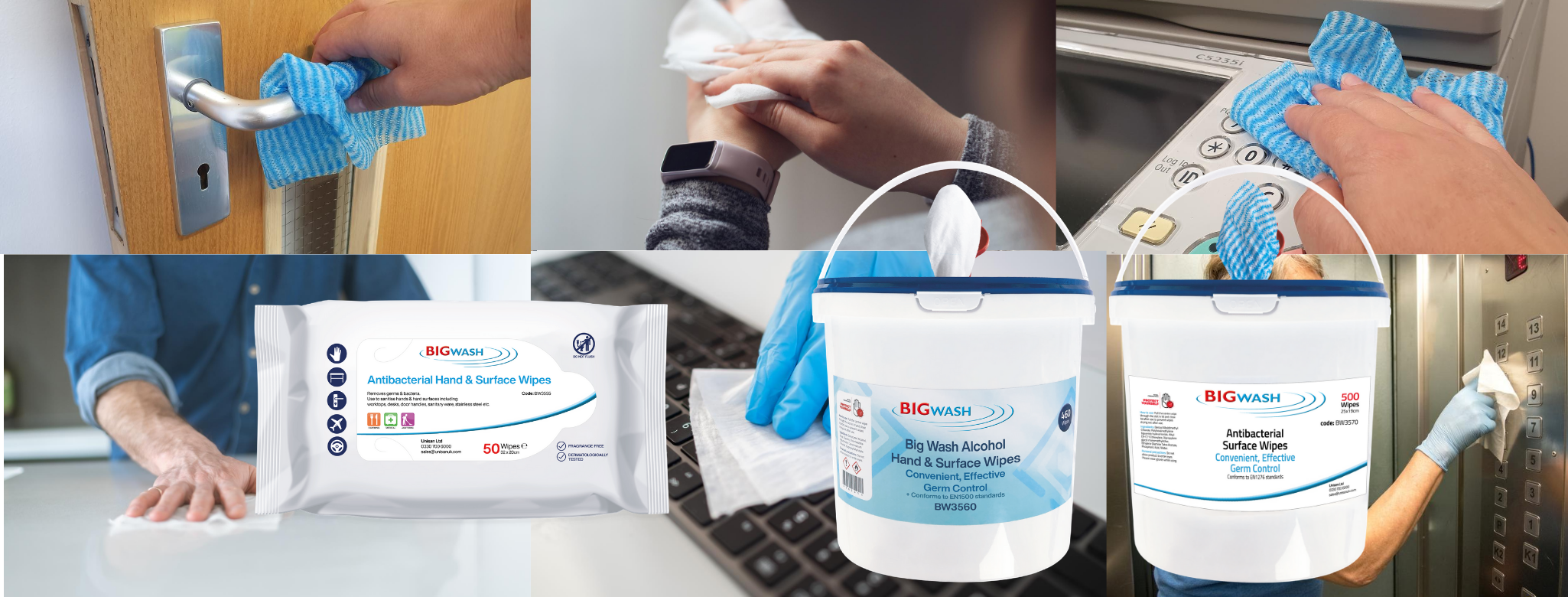
Since the COVID-19 pandemic has struck, many consumables which were previously unimportant in our lives have been thrown into the spotlight, and become essential. Face masks, hand sanitiser gel, hand and surface sanitiser wipes are now a necessary part of our daily lives.
Demand for hygiene range has dramatically escalated in the past few months, understandably. We have had customers asking us all sorts of detailed questions regarding some of these products, so here we seek to address all questions regarding our antibacterial wipes!
Why will our sanitiser wipes only kill 99.99% of virus and bacteria?
The reason that you can’t claim 100% of germs, is due to the EN test methods. The results are a requirement of the standard.
At the end of the test you have to neutralise the biocide in a 1in10 dilution. If the results show 0 organisms present, the test standard requires you to assume there is at least one organism present. When you multiply it up by the dilution factor, you can only be sure there is less than 10 organisms present, which results in a claim of 99.99%.
Nobody can make a 100% kill rate claim, so you should never see a competitor with this. If you do, we could report it to trading standards or the HSE.
To give you an idea, a 99.99% kill rate or 4 log reduction means lowering the number of microorganisms by 10,000-fold, that is, if a surface has 10,000 pathogenic microbes on it, a 4-log reduction would reduce the number of microorganisms to one.
Depending on the organism you are testing the standards vary, which is why you see a variation from 99.99% and 99.999% for viruses vs. bacteria.
In reality the test will show no organisms present, but because of the standards, it can’t be claimed to kill 100% of organisms.
To sum up it’s due to the test standards and methods used in microbiology.
Whats the difference between Antibacterial wipes and sanitiser wipes?
Antibacterial wipes, sanitiser wipes, alcohol wipes, disinfectant wipes… they all work towards the same goal of killing 99.99% of bacteria and viruses, but may use a different active ingredient / formulation to reach this goal. For example our antibacterial wipes (non alcohol) uses Benzyl Alkyldimethyl Chloride as the main active ingredient to kill the germs, whereas our hand & surface sanitiser wipes or our buckets of alcohol wipes use Ethanol which is a type of alcohol, to kill the germs, similar to how alcohol hand sanitiser kills germs.
What affects the wipes prices?
Several different factors play into the price of sanitiser wipes, for example:
- The size of each wipe
- Availability of raw materials to produce the wipes
- How are the wipes packaged? In a tub/bucket or flow wrap
- What standards are the wipes certified to?
- How thick is the wipe? What is the quality like, how much material has been used to create it
Lets look at our Big Wash Antibacterial Hand & Surface Wipes which cost £3.95 per pack, vs this example of sanitiser wipes which costs £3.65 per pack. So, why the price difference? They are both a pack of 50 wipes.
Looking at the size of both different wipes immediately points up why the price differs – The slightly more expensive version is a generous 320x200mm, whereas the cheaper is a mere 150mm x 200mm, showing a big difference in the size of the wipes, and pointing up which is better value for money.

Take a look at the range of antibacterial sanitiser wipes we sell here:

